Kwangho Lee goes from collectible design to a new furniture range for Hem
Stockholm Design Week 2022: created by the Korean designer for Hem, the ‘Hunk’ chair and ‘Glyph’ tables are an evolution of Lee's experimental designs
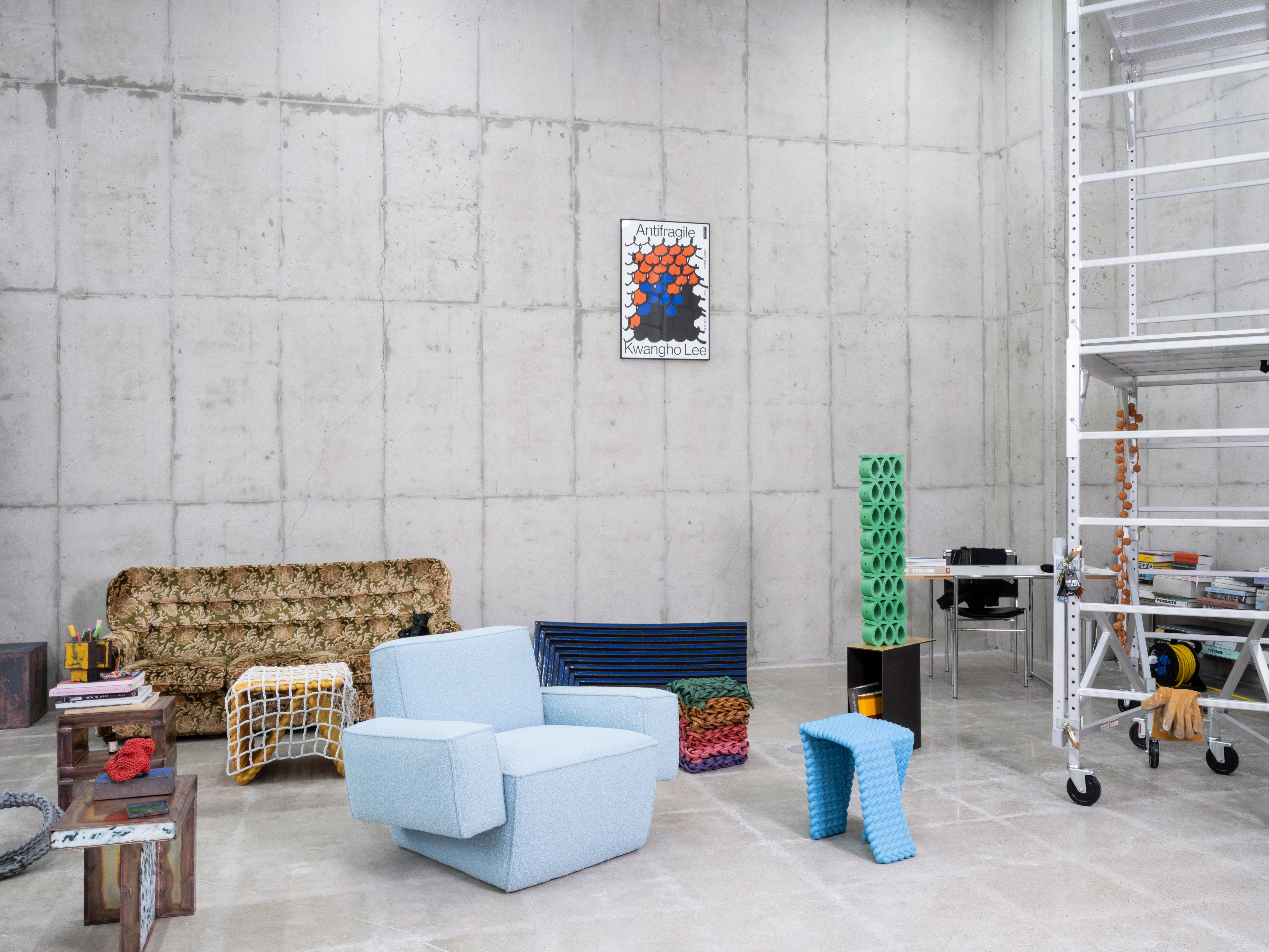
Dongkyun Vak - Photography
Kwangho Lee became a furniture designer by chance. Originally trained in metal art and design at Seoul’s Hongik University, he created a few furniture pieces for his 2007 graduation show, which caught the attention of a number of design galleries, including Montreal’s Commissaires and New York’s Johnson Trading Gallery. Over the past 15 years, the Korean designer’s body of work has expanded to include furniture, installations and interiors, and he is now launching his first collection outside the collectible design circuit, in collaboration with Swedish furniture brand Hem.
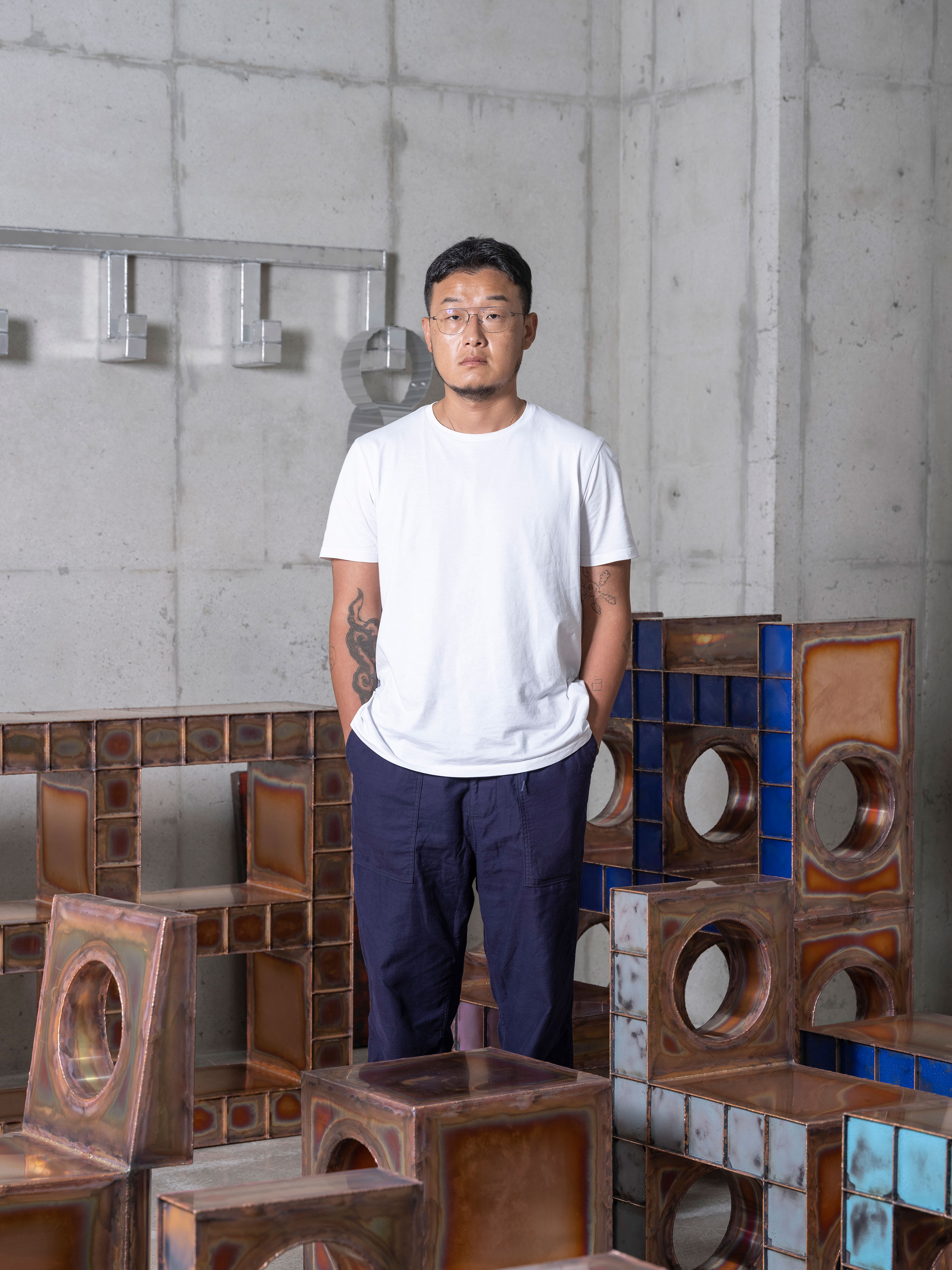
Kwangho Lee photographed in his Hanam studio, on the outskirts of Seoul in July 2022 with his enamelled copper pieces for Salon 94
The result of fabrication experiments with wood, stone, straw, sculpted styrofoam, knotted nylon cord and enamelled copper, Lee’s heavily process-based work conveys an excitement for materials and craft that has deep roots in his childhood.
‘My grandparents have been a great influence. They were farmers and so naturally that had an effect on the way I think and create with my hands,’ he explains. Observing his grandparents using natural materials to make tools and objects fostered an interest in making things with his hands. Lee would whittle wood to make slingshots and play with handmade water wheels by a stream. ‘The joy of making is central to explaining my work,’ he says.
His designs are a natural progression of his upbringing. Working from two studio spaces (a smaller studio in Seoul’s Seongsudong neighbourhood, as well as a larger workshop in nearby Hanam), Lee knots, cuts, bakes and welds materials to create refined furniture that bears traces of its manufacturing process.
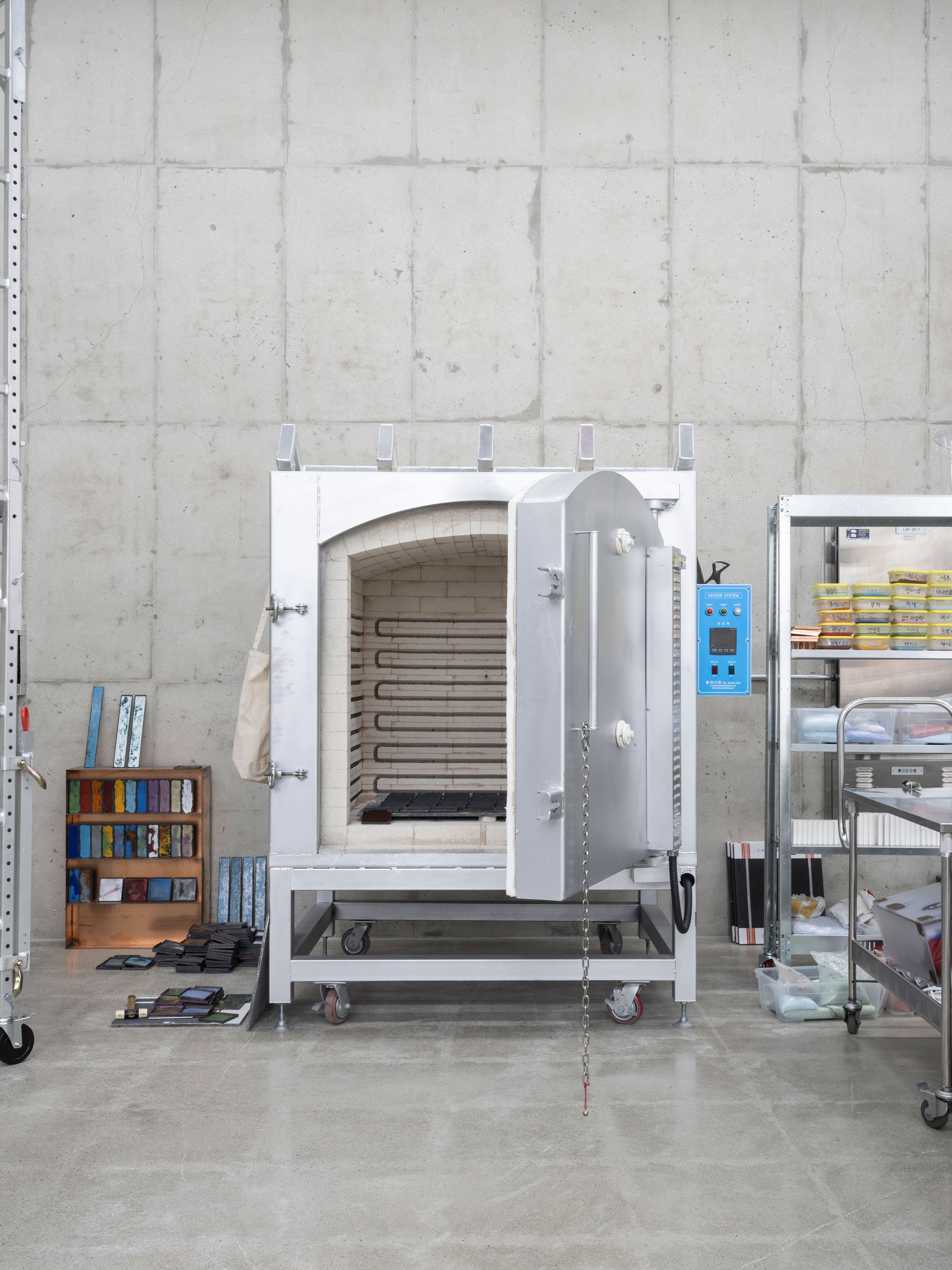
The chilbo kiln, used to fire coloured glass onto copper or brass.
Among his best known works are pieces featuring enamelled copper surfaces, which he started making in 2013 using a traditional Korean technique called chilbo that he replicates in a large kiln in his Hanam studio. It involves crushing coloured glass that is then fired onto copper or brass sheets, with unexpected, often raw results. The technique is normally applied to jewellery or small objects, but Lee applies it to larger surfaces on roughly welded copper furniture, or panels inlaid in delicately crafted cherry wood, to create chairs, cabinets, tables and lighting.
Knotted nylon wire has been a recurring material in the designer’s work from the outset. He first encountered it in 2007 when working on lighting design – or more precisely, when he created oversized knotted compositions of bright blue and red wires, woven around large bulbs and partially dangled from the ceiling. ‘At the time, I thought that the three most important aspects of producing lighting were electricity, electrical wire, and bulbs,’ he explains. ‘To create a lighting element using only those elements, I started knotting and knitting the wire itself. After two or three years of making lighting elements using wire, I gained the confidence to weave something together to make furniture, and PVC tubing was the material I came to choose.’
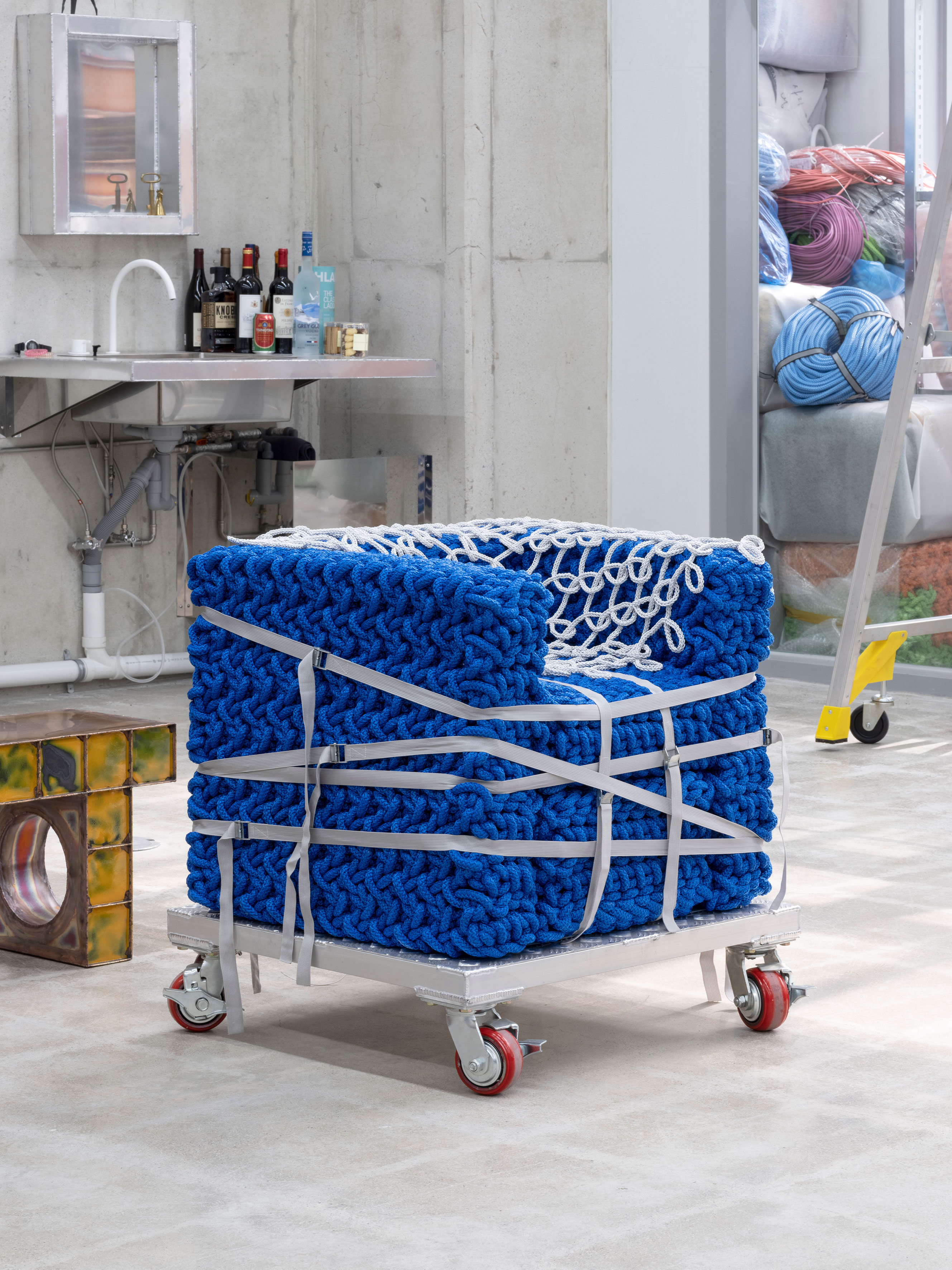
Armchair from the ‘Obsession’ series
Once again experimenting with the material possibilities of weaving (he tried it in nylon as well as leather), he created furniture with more rigid and contained shapes than the technique would usually allow. ‘To build a form for woven furniture using only this process, and without a given frame, it had to become simple, otherwise it cannot maintain itself and collapses,’ he says of the collection’s simple forms, which translate into chairs, sofas and tables. ‘As I continued to make these pieces, I came to develop a preference for certain geometric forms and proportions, and this preference carried over to my chilbo works, leading them to assume a similar form and proportion.’
Wallpaper* Newsletter
Receive our daily digest of inspiration, escapism and design stories from around the world direct to your inbox.
The knotted works are part of an ongoing series called ‘Obsession’, started in 2008, which embody a reflection of his thoughts on craft at the time. ‘It was my question of where I could take this weaving, how long I could continue this way of working. That question continues today. I started weaving in 2006 for my grad show and I still have so many materials and forms I’ve yet to work on.’
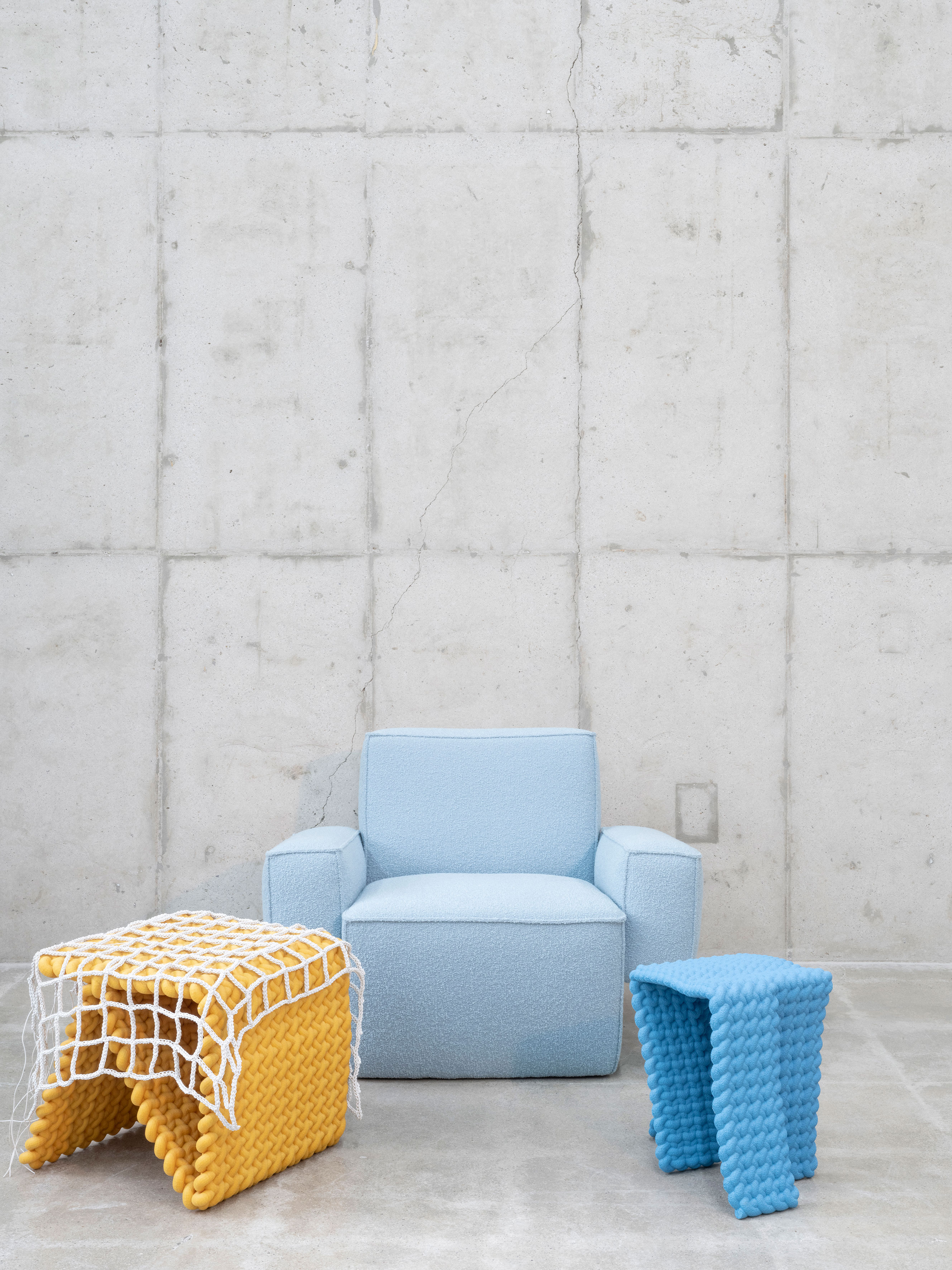
‘Hunk’ lounge chair, from €2,299, for Hem, alongside 3D-printed pieces, from a series started in 2019 referencing Lee’s knotted works
The ‘Obsession’ series caught the attention of Petrus Palmér, founder of Hem: ‘I found Kwangho’s woven ropework fascinating for its obsessive nature, the pop culture references and the bright colours,’ he says. He commissioned Lee to create new pieces for the brand, and the resulting collection marks the first time the designer’s visual language is translated for large-scale production and available to a wider audience.
For Hem, Lee created a lounge chair whose design stems from one of the ‘Obsession’ pieces: angular and bulky, the ‘Hunk’ chair is defined by four blocks in an archetypal armchair form, a natural progression of the simple knotted designs that inspired the piece. Available with or without armrests, the chair is accompanied by a series of tables, made of folded and bent metal and developed from ‘New Armor’, a 2013 collection of lacquered bronze furniture inspired by the body armour used in Korea’s Joseon dynasty (1392-1910).
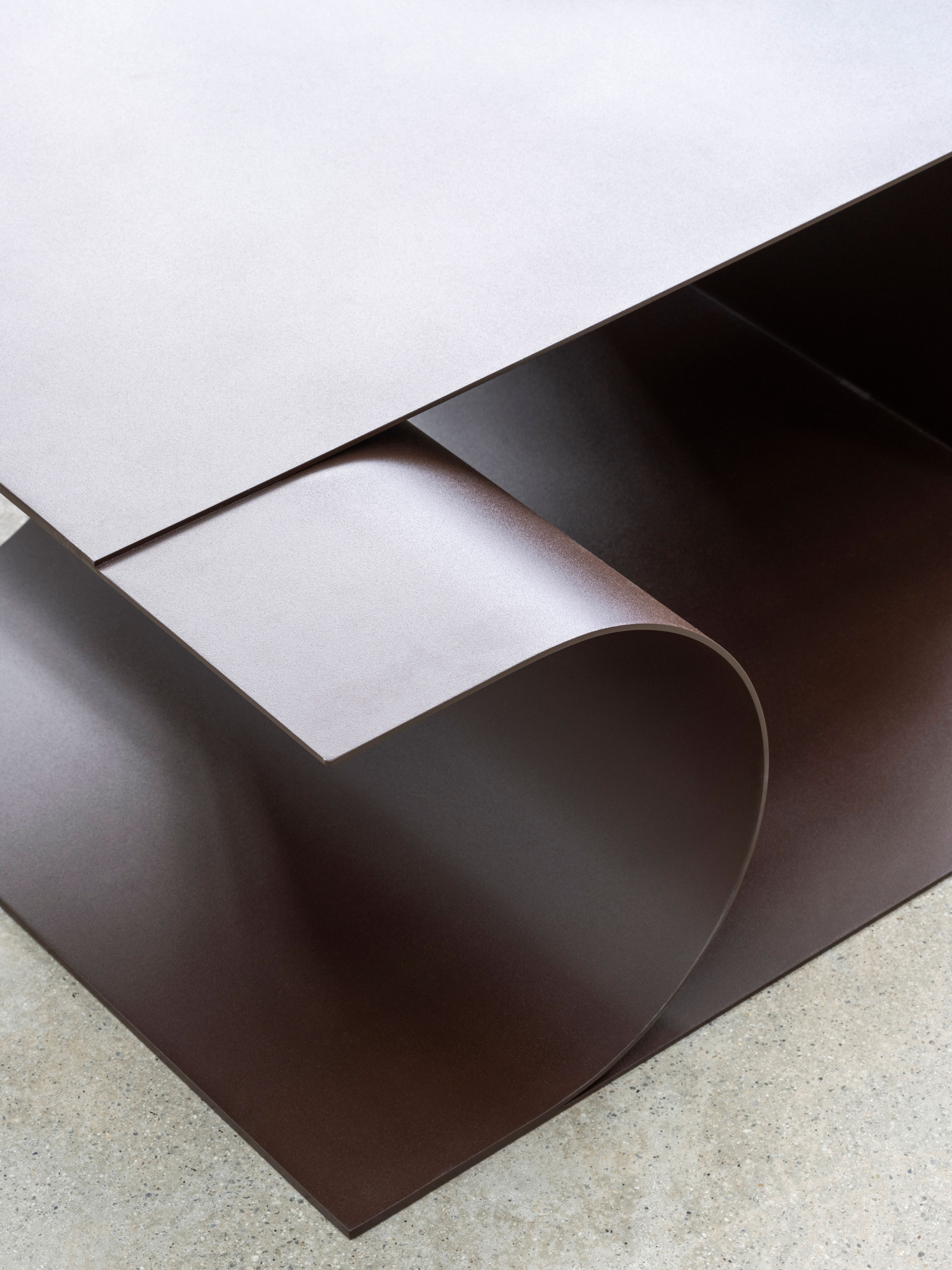
Detail of ‘Glyph’ side table, from €467, for Hem
‘The starting point is a shape dedicated to protecting the human body,’ says Lee. ‘The curves and straight lines of the shoulders, the torso and the back were rearranged into a new form, a new armour.’ The ‘Glyph’ tables for Hem simplify the language of the original works, ‘transforming the shapes into hieroglyphics, each table with its own unique silhouette as if creating a new word’.
Lee perfectly embodies Hem’s spirit, joining a roster of creatives that blur the boundaries between limited edition and industrial design, such as Max Lamb, Sabine Marcelis, Formafantasma and Faye Toogood.
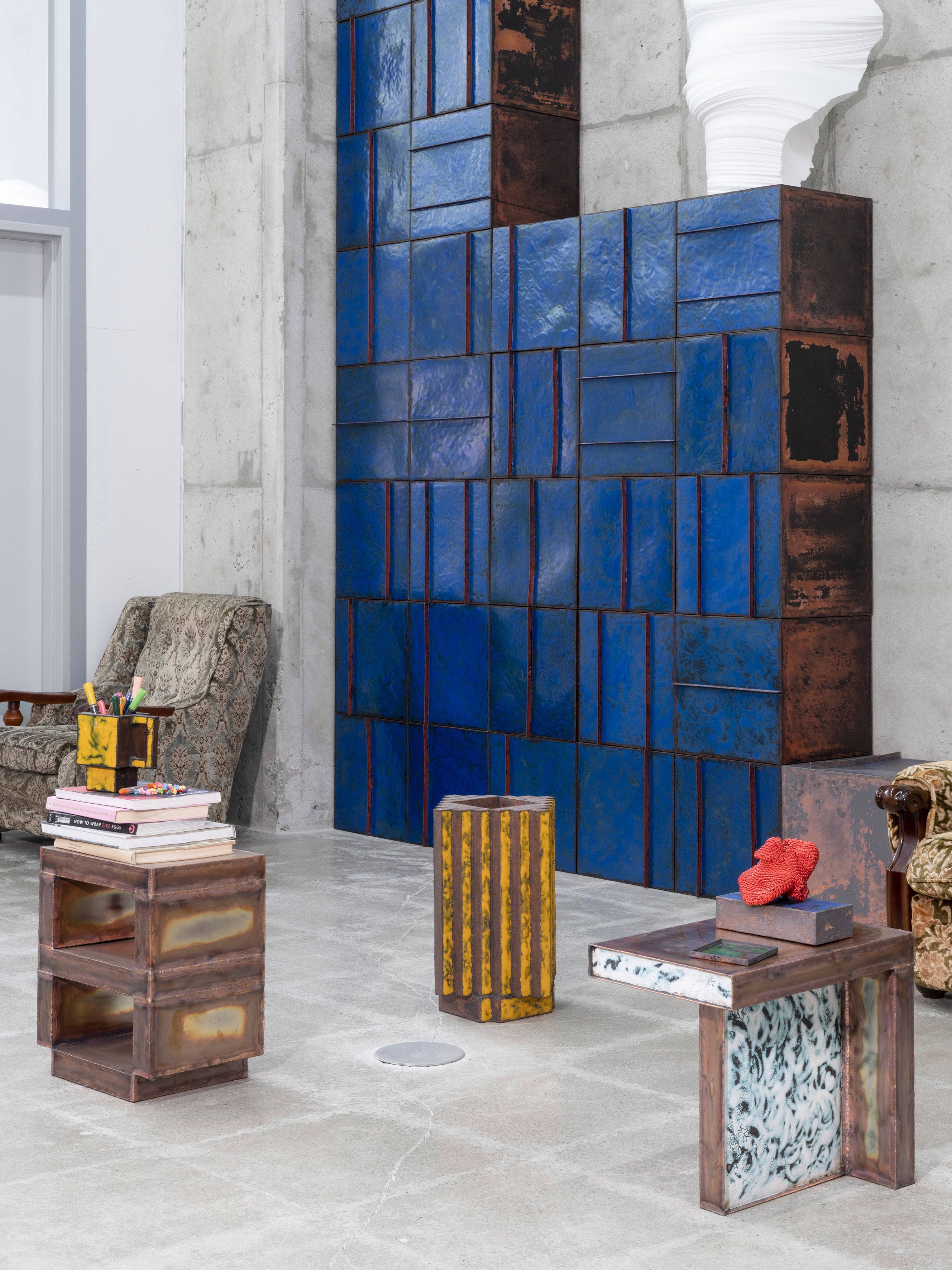
Copper enamelled pieces in Lee’s Hanam studio
‘We like to think that we move pretty freely between the two disciplines,’ says Palmér, explaining that the brand’s pieces often originate from one-off productions or experiments. The company’s motto, ‘Imaginative designs of obsessive quality’, reflects Hem’s mission to be what Palmér calls ‘the defining design brand of our generation’.
‘The key effort has been to translate the handmade quality of my work into a larger scale of production,’ says Lee. ‘And I think that it’s been a unique challenge for me, trying to find this new way of working. This whole process has been just trying out new methods and seeing where each iteration takes us. I’m very excited to see how this goes and where the collaborations take us.’
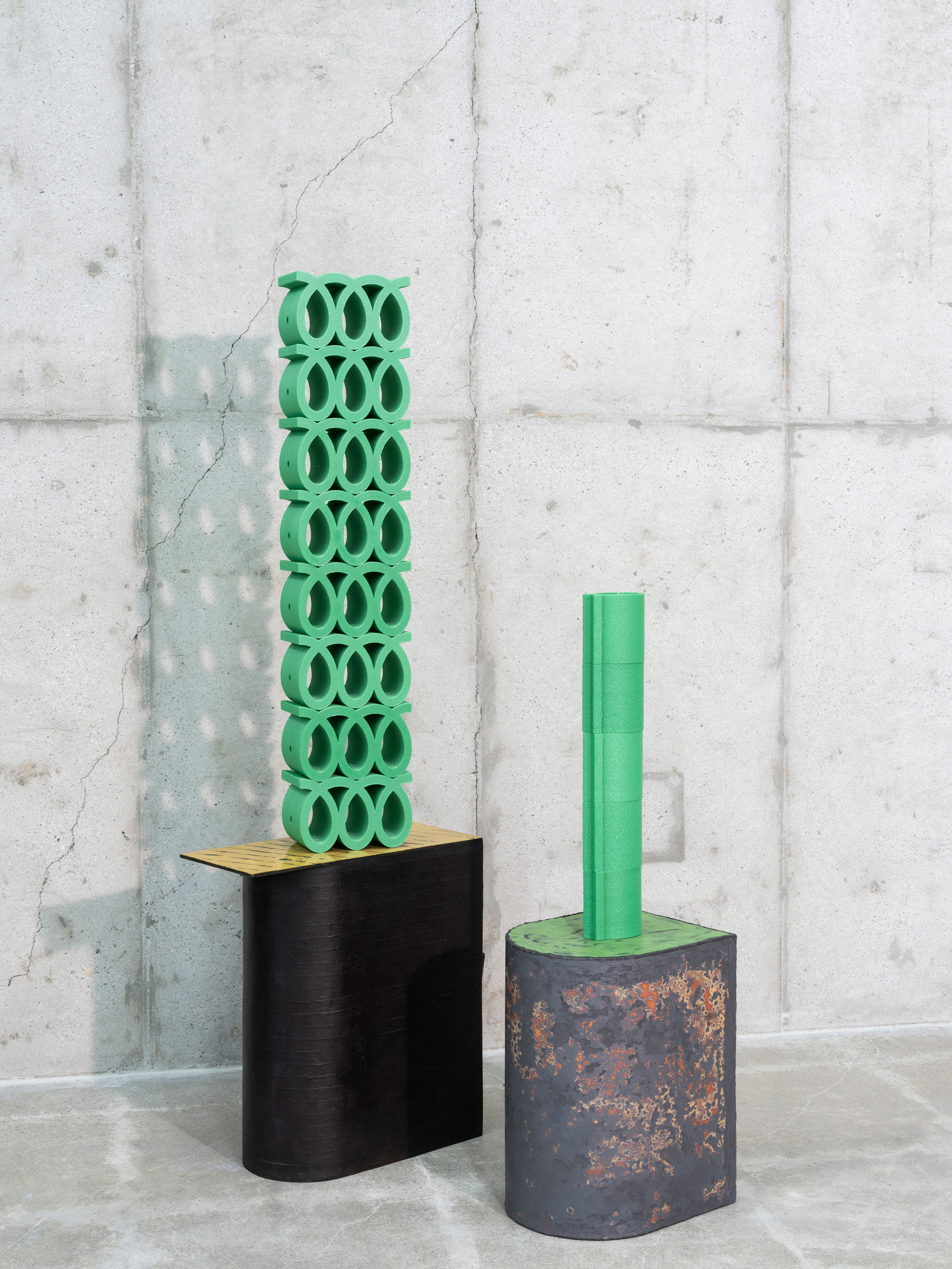
‘Tide’ tiles for Tajimi Custom Tiles on lacquered bronze furniture from the ‘New Armor’ series
INFORMATION
The collaboration between Kwangho Lee and Hem is debuted at Stockholm Design Week 2022, 5-1 September
ADDRESS
Hem
Torsgatan 16
Stockholm
Rosa Bertoli was born in Udine, Italy, and now lives in London. Since 2014, she has been the Design Editor of Wallpaper*, where she oversees design content for the print and online editions, as well as special editorial projects. Through her role at Wallpaper*, she has written extensively about all areas of design. Rosa has been speaker and moderator for various design talks and conferences including London Craft Week, Maison & Objet, The Italian Cultural Institute (London), Clippings, Zaha Hadid Design, Kartell and Frieze Art Fair. Rosa has been on judging panels for the Chart Architecture Award, the Dutch Design Awards and the DesignGuild Marks. She has written for numerous English and Italian language publications, and worked as a content and communication consultant for fashion and design brands.
-
 Put these emerging artists on your radar
Put these emerging artists on your radarThis crop of six new talents is poised to shake up the art world. Get to know them now
By Tianna Williams
-
 Dining at Pyrá feels like a Mediterranean kiss on both cheeks
Dining at Pyrá feels like a Mediterranean kiss on both cheeksDesigned by House of Dré, this Lonsdale Road addition dishes up an enticing fusion of Greek and Spanish cooking
By Sofia de la Cruz
-
 Creased, crumpled: S/S 2025 menswear is about clothes that have ‘lived a life’
Creased, crumpled: S/S 2025 menswear is about clothes that have ‘lived a life’The S/S 2025 menswear collections see designers embrace the creased and the crumpled, conjuring a mood of laidback languor that ran through the season – captured here by photographer Steve Harnacke and stylist Nicola Neri for Wallpaper*
By Jack Moss
-
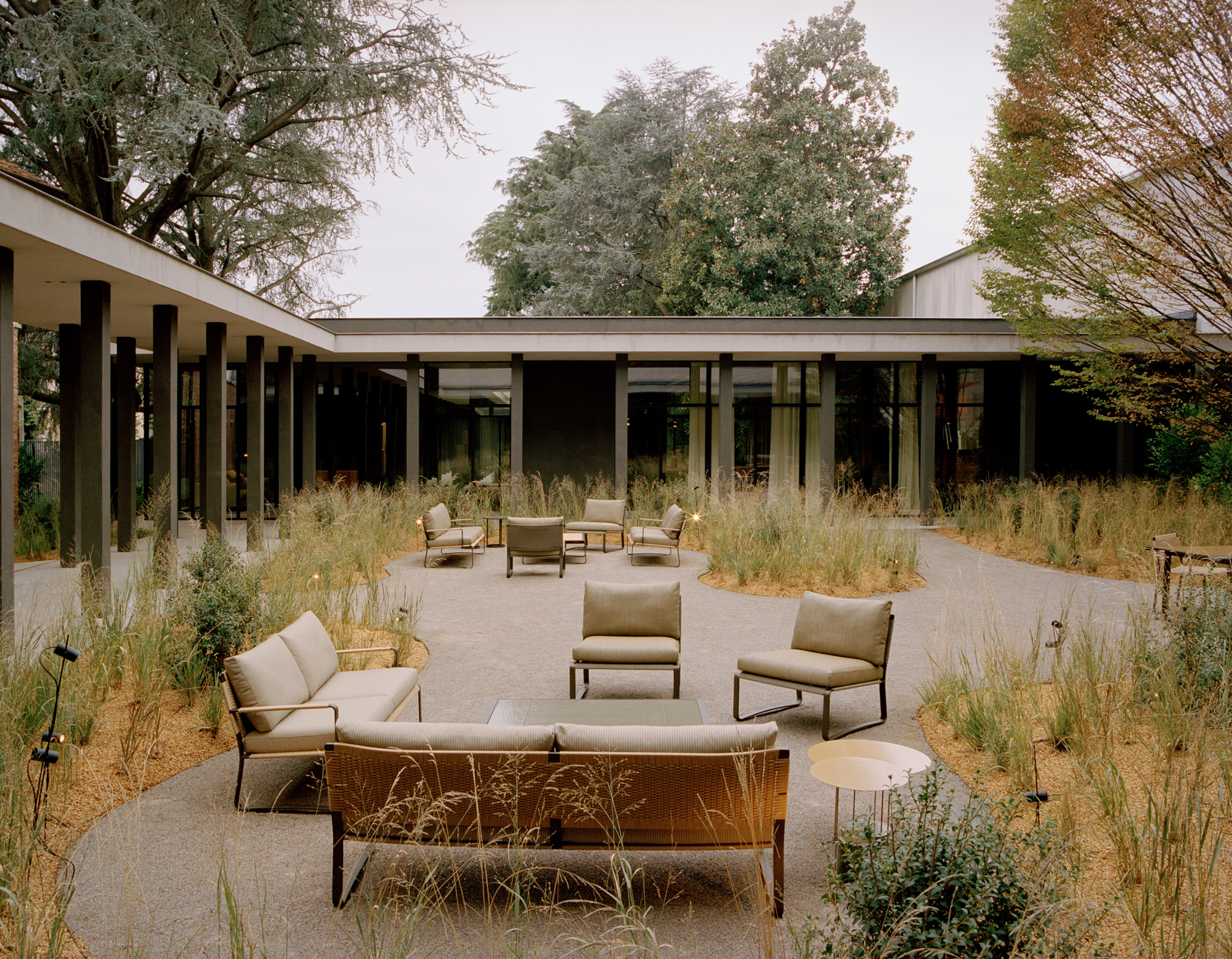 Vincent Van Duysen ‘inspired by modernism’ for Molteni & C’s outdoor furniture debut
Vincent Van Duysen ‘inspired by modernism’ for Molteni & C’s outdoor furniture debutMolteni & C goes alfresco with two new collections and reissued classics, bringing its signature elegance to the great outdoors
By Rosa Bertoli
-
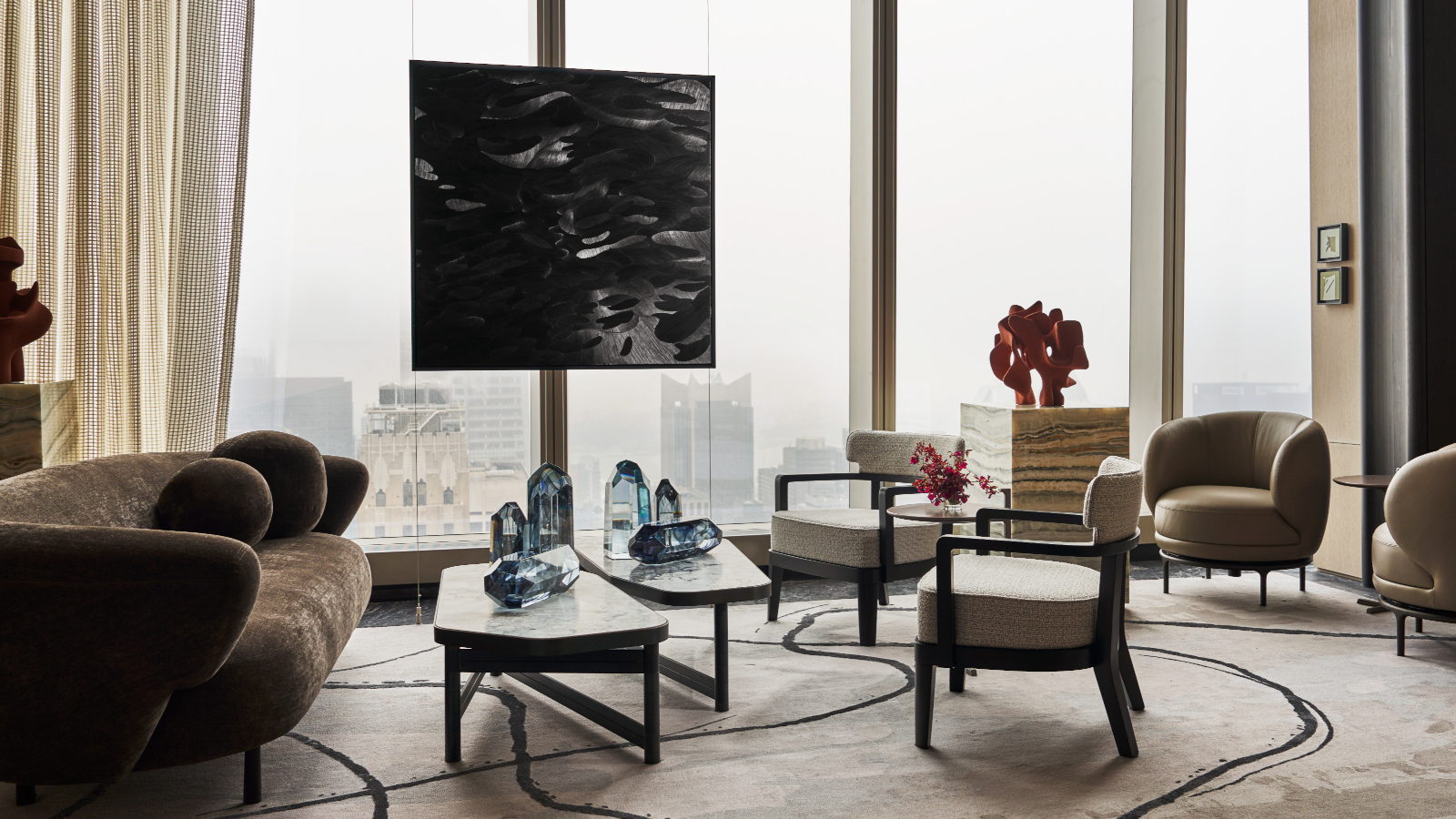 First look inside Centurion New York by Yabu Pushelberg
First look inside Centurion New York by Yabu PushelbergCenturion New York is an expansive new space for American Express’ ‘black card’ members. Its interior designers Yabu Pushelberg give us a tour
By Tilly Macalister-Smith
-
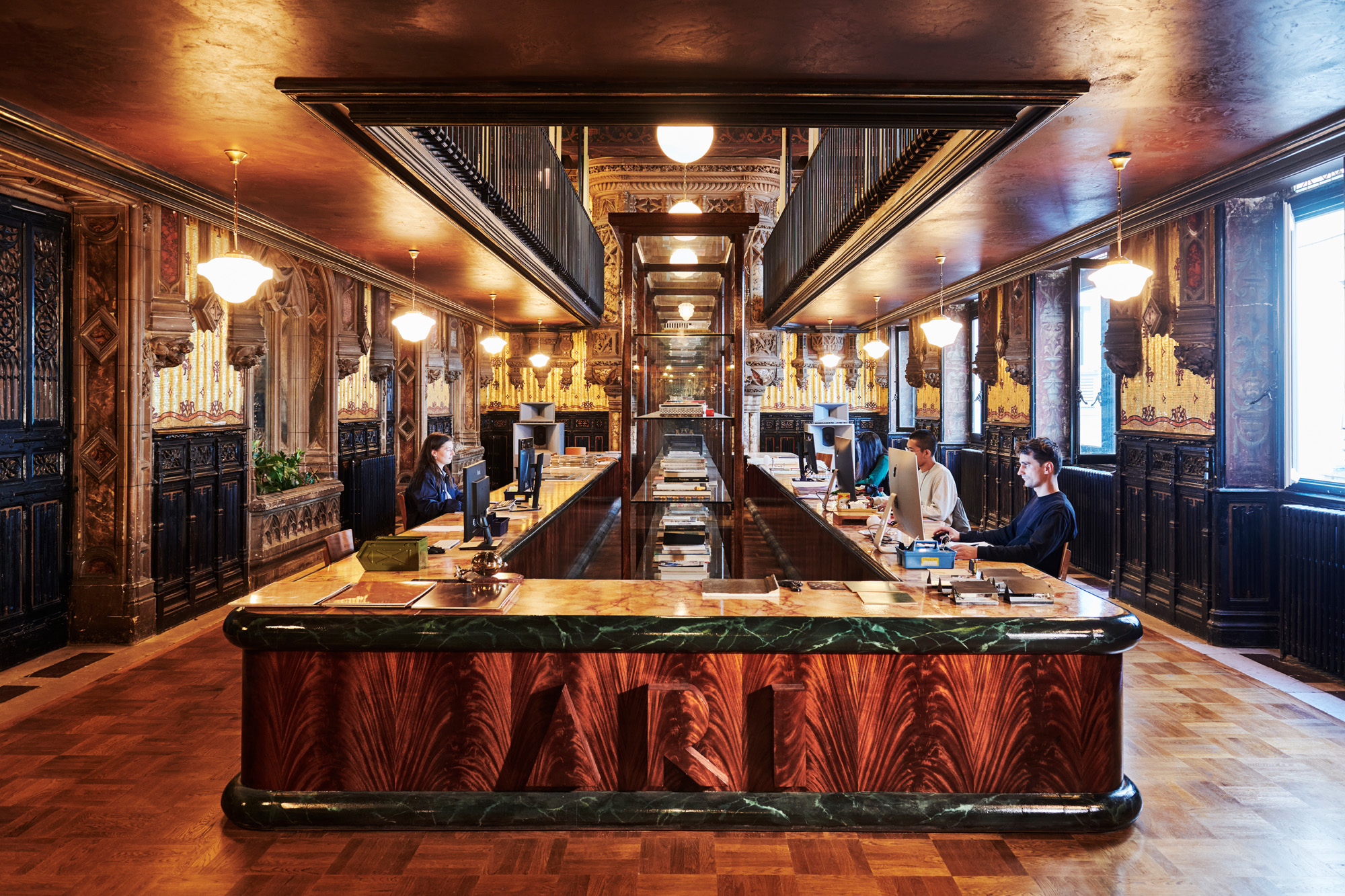 Is this the most beautiful office in the world?
Is this the most beautiful office in the world?Parisian creative agency Art Recherche Industrie’s new HQ translates a 19th-century landmark into a chic open-plan office worth leaving home for
By Rosa Bertoli
-
 Designer James Shaw’s latest creation is a self-built home in east London
Designer James Shaw’s latest creation is a self-built home in east LondonJames Shaw's east London home is Filled with vintage finds and his trademark extruded plastic furniture, a compact self-built marvel
By Rosa Bertoli
-
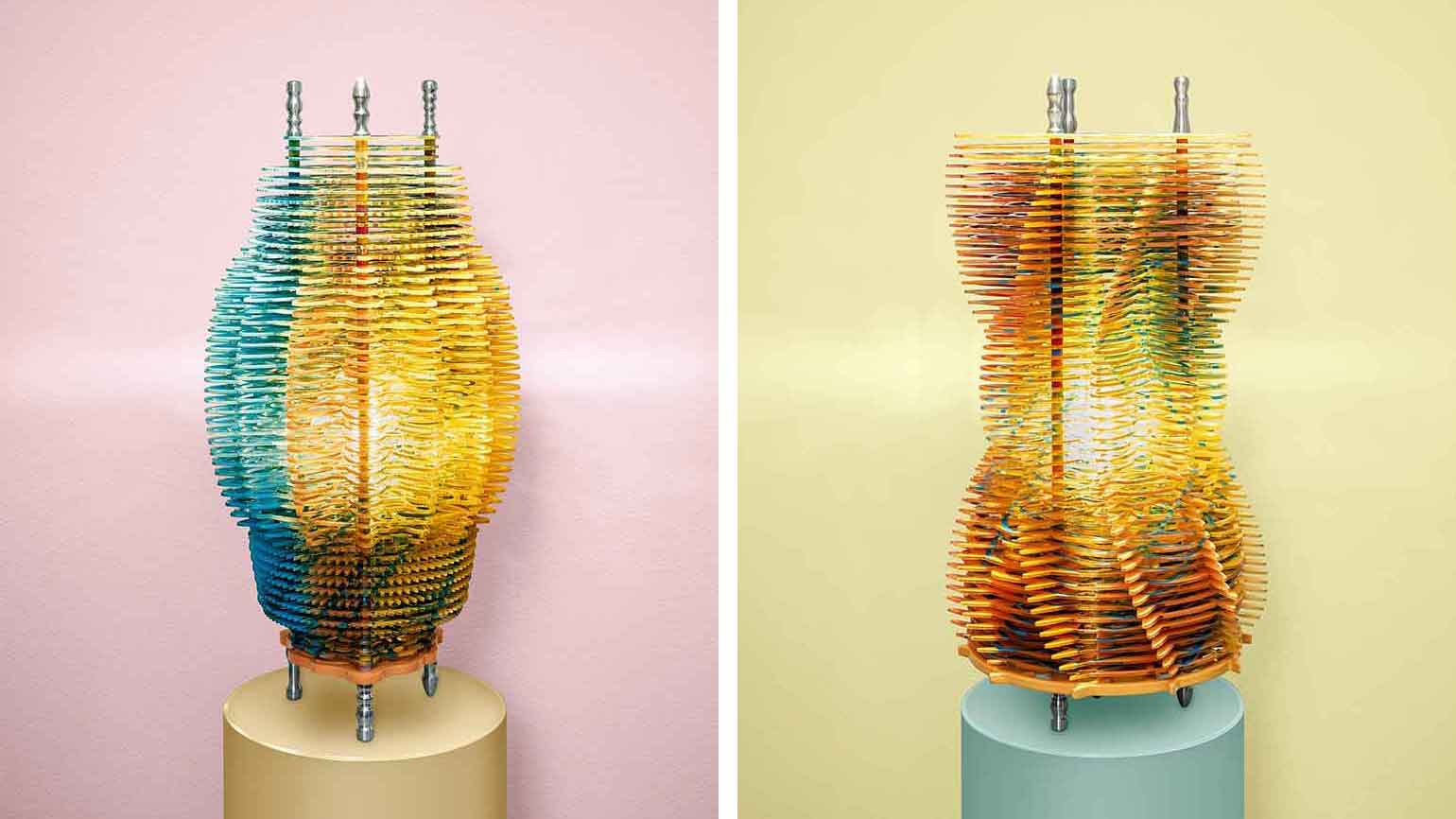 Taschen tantalises with new edition of Jorge Pardo’s ‘Brussels Lamps’
Taschen tantalises with new edition of Jorge Pardo’s ‘Brussels Lamps’German publishing house Taschen launches a limited-edition series of five ‘Brussels Lamps’ by Cuban-American artist Jorge Pardo
By Rosa Bertoli
-
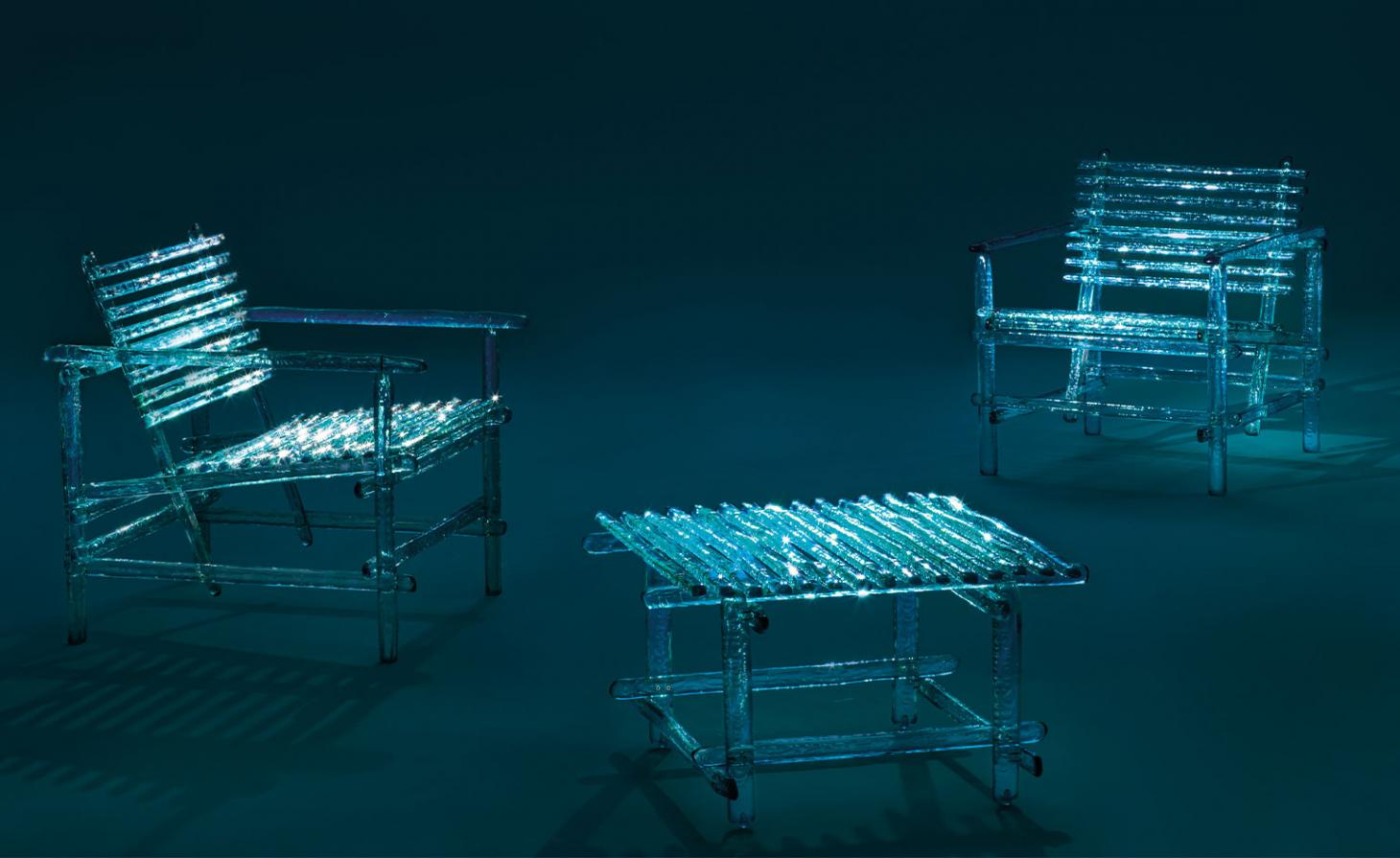 Edra’s outdoor furniture is an ode to the sea
Edra’s outdoor furniture is an ode to the seaDesigned by long-term collaborator Jacopo Foggini, the ‘A’mare’ collection of outdoor furniture mimics shiny water, and was named 'Best Disappearing Act' at the Wallpaper* Design Awards 2023
By Rosa Bertoli
-
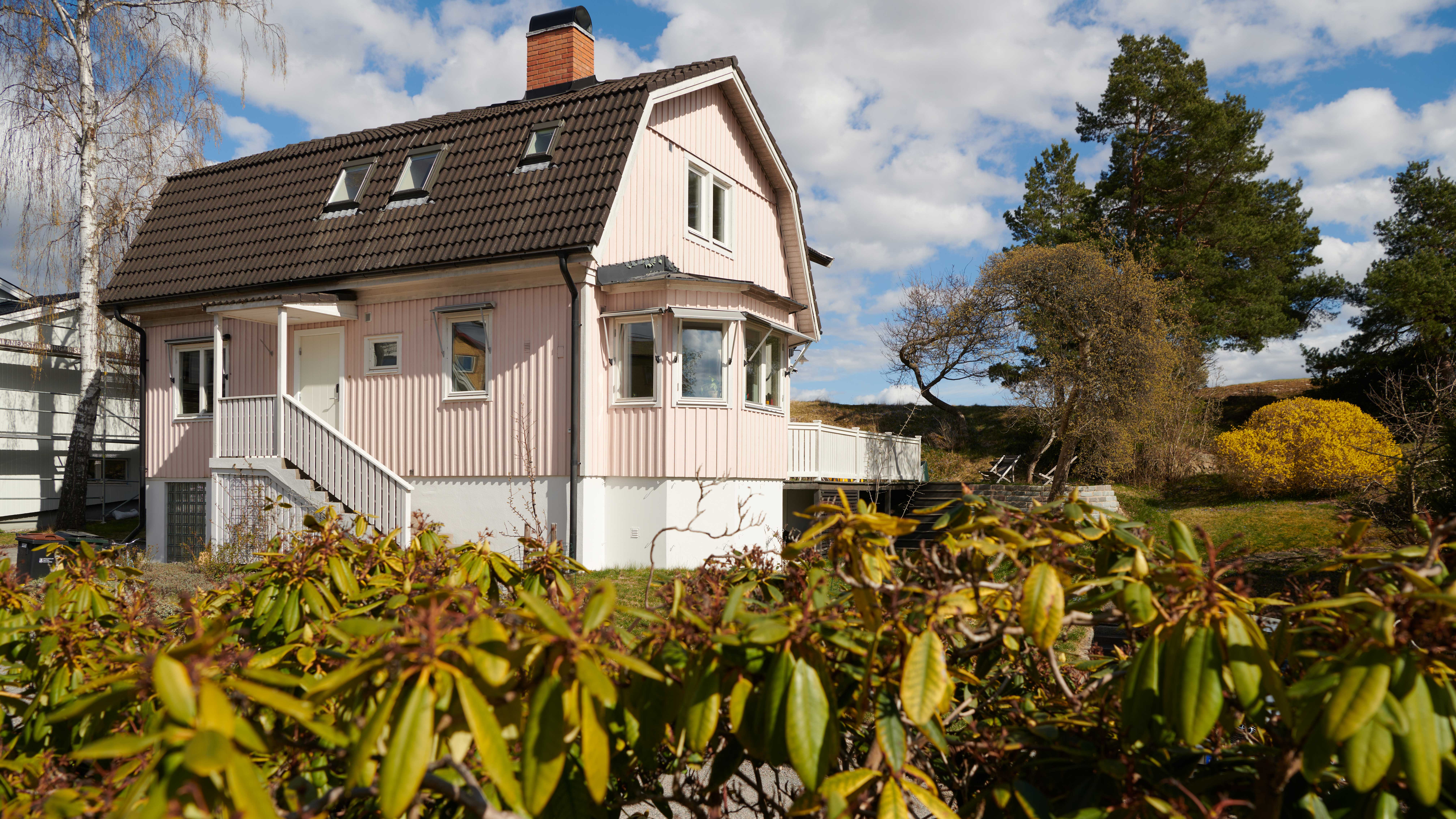 Peep inside Luca Nichetto’s Pink Villa in Stockholm, part studio, part showroom
Peep inside Luca Nichetto’s Pink Villa in Stockholm, part studio, part showroomWelcome to the pink house that is the new Stockholm home to Luca Nichetto's team
By Maria Cristina Didero
-
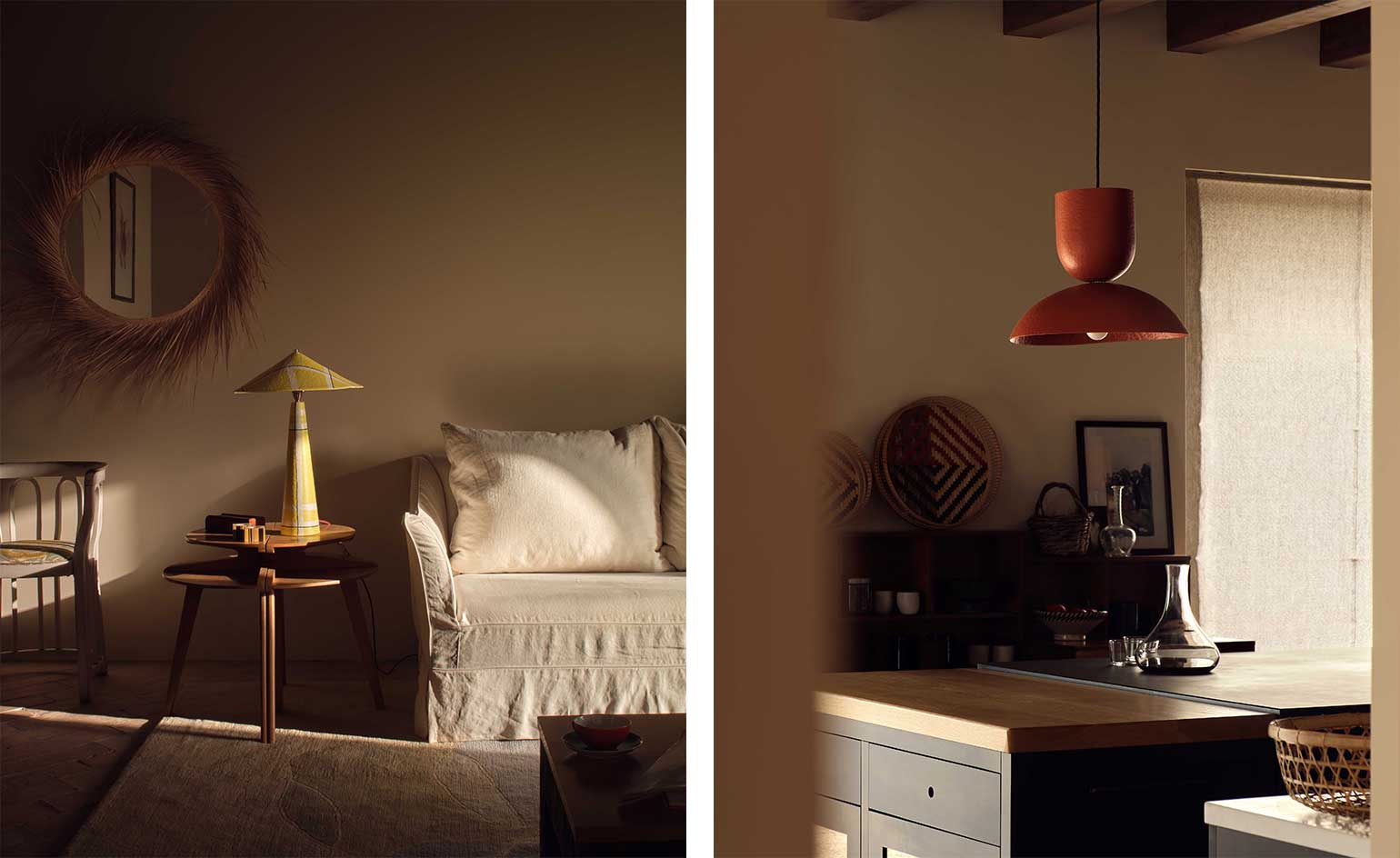 These papier-mâché lamps combine craft with sustainability
These papier-mâché lamps combine craft with sustainabilitySustainability and fine art are the driving inspirations behind ‘resolutely maximalist’ London lighting designer Rowena Morgan-Cox of Palefire
By Tilly Macalister-Smith